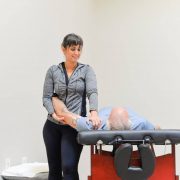Steroid injections may do more harm than good, research shows
Have you been told you need to get a cortisone injection? Have you already tried them more than once?
Research is now showing that cortisone injections may hurt more than help in the long run!
The results of a recent study from Radiology has raised concerns in the medical community about potentially adverse effects on joints following corticosteroid injections. These injections are commonly used to treat arthritis, especially osteoarthritis of the hip and knee. The researchers in this study observed patients who had previously received steroid injections and found that some of the patients exhibited further joint damage on medical imaging tests. According to the original article, these patients presented with “accelerated OA [osteoarthritis] progression, subchondral insufficiency fracture, complications of osteonecrosis, and rapid joint destruction, including bone loss.”
The joint issues that can be triggered by cortisone injections don’t just show up right after the procedure — which makes it easy to see the steroid shot as a quick fix with no drawbacks.
And it’s true that there are usually no short-term side effects. However, when it comes to your joints, it’s all about the long game. And it’s worth noting that an analysis from the Cochrane Review in 2015 found that the benefits of steroid injections usually wear off after about six months… meaning it’s a temporary “band-aid” solution to a bigger problem — a band-aid with the potential to result in permanent degradation of your joints!
Arthritis is an issue we see all the time in our physical therapy practice, and that’s why patient and physician concerns with steroid injections are so relevant to us. Many of our clients have had injections suggested to them or have gone through with the procedure but not experienced any long-term healing. In many cases, this can be an overly simplified answer to the very complicated question of individual pain. Physical therapy, on the other hand, isn’t a one-size-fits-all solution. Our treatment model is entirely based around addressing the root cause of your pain instead of just providing temporary relief. Plus, we’re all about keeping your treatment non-invasive, movement-based, and entirely customized to YOU.
If you’ve been told that you need a cortisone injection in your back, knee, or shoulder, think twice and get informed about other options!
If you’d like a NATURAL route to pain relief — and one that will make you more mobile and active at the same time — come talk with us! You can even schedule a FREE 30 minute Discovery Session with our Portsmouth, NH physical therapy specialists right now — no strings attached.




